

Stories
If you have a roomful of eager 7th or 8th graders-just waiting to hear a buffalo story– great!
And if you don’t–well tell one of these to your Dad or Mom–or someone at work or the Senior Center who has a soft spot in their heart for buffalo.
You can brighten their day. And brighten your own with the telling and the chuckle you both share.
Please share your favorite buffalo story with us. We’d love to hear it.
Write it here and email to fmberg@ndsupernet.com.

The Buffalo Stone
by Francie M. Berg | Feb 9, 2021 | Stories
A small stone, which is often a fossil shell, or sometimes only a queer shaped piece of flint, is called by the Blackfeet I-nĭs´kĭm, the buffalo stone.
This stone has great power, and gives its owner good luck in bringing the buffalo close, so that they may be killed.
The stone is found on the prairie, and anyone who finds one is thought to be very lucky.
Sometimes a man who is going along on the prairie will hear a queer faint chirp, such as a little bird might make. He knows this sound is made by a buffalo stone.
He stops and searches for it on the ground, and if he cannot find it, marks the place and comes back next day to look for it again. If it is found, he and all his family are glad.
The Blackfeet tell a story about how the first buffalo stone was found.
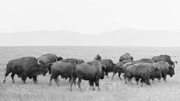
Geist: All buffalo today likely descended from under 300
by Francie M. Berg | Jan 26, 2021 | Stories
Valerius Geist, for 27 years a Professor of Zoology, Program Director of Environmental Science at the University of Calgary, Alberta, Canada, and author of Buffalo Nation: History and Legend of the North American Bison — estimates that all Plains Bison originated from 88 bison calves captured between 1873 and 1889, plus 23 Yellowstone survivors—for a total of 111.
Geist says the Woods Buffalo of Canada survived back then in somewhat larger numbers than Plains Buffalo.
“In the 1890s, the herd of northern Bison in what is now Wood Buffalo National Park, Alberta, may have shrunk to 300 to 500 animals. It is even possible that as few as 250 survived,” he writes.

The Buffalo and the Field Mouse
by Francie M. Berg | Jan 12, 2021 | Stories
Once upon a time, when the Field Mouse was out gathering wild beans for the winter, his neighbor, the Buffalo, came down to graze in the meadow.
The little Mouse did not like this. He knew that the buffalo would mow down all the long grass with his prickly tongue, and there would be no place in which to hide.
He decided to offer battle like a man.
“Ho, Friend Buffalo, I challenge you to a fight!” he yelled in a small, squeaky voice.
The Buffalo paid no attention, thinking it a joke.
The Mouse angrily repeated his challenge.
The buffalo went on quietly grazing while the little Mouse laughed with contemp.
The Buffalo at last looked at him and said, “You had better keep still, little one, or I shall come over there and step on you, and there will be nothing left!”
“Ha! You can’t do that! “replied the Mouse.
“If you speak to me again, I will come and put an end to you!” said the Buffalo, getting angry.
“I dare you! “said the Mouse.
The buffalo ran at him, trampling the grass and tearing up the earth with his front hoofs.
He looked for the Mouse, but he could not see him anywhere.
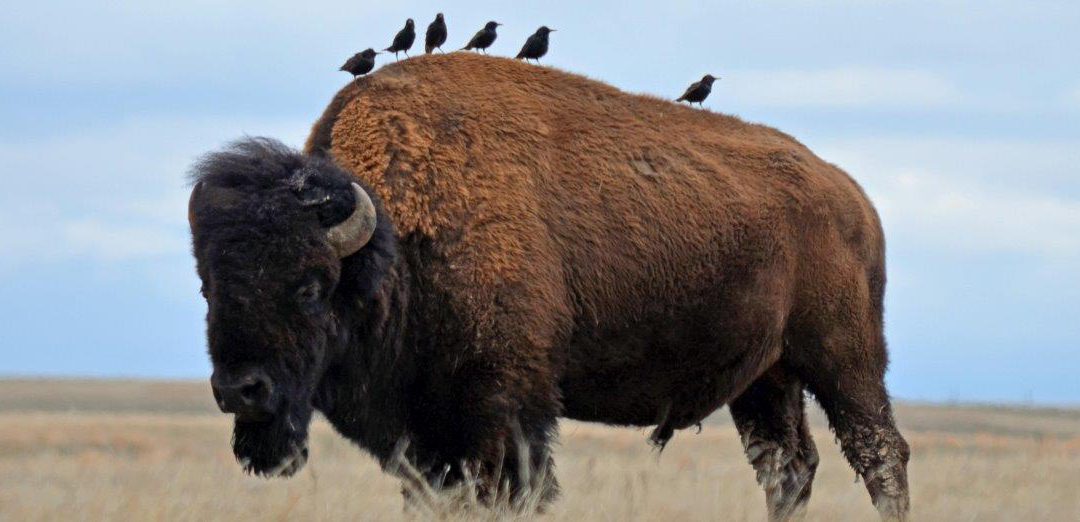
The Friendship of Brother Crow and Brother Buffalo
by Francie M. Berg | Dec 29, 2020 | Stories
The Shawnee needed buffalo for food and skins. But every time the Shawnee went out to hunt buffalo, Crow would warn them and they would escape.
Crow was pure white in the beginning. He was brother to the buffalo.
One day the Shawnee hunting party gathered around the campfire to prepare for a hunt.
Cawanemua said, “We must do something about Crow. I will dress as a buffalo and when Brother Crow comes to warn the buffalo of our hunt, I will grab him.”
The next day, Cawanemua pulled a buffalo skin over himself and joined the buffalo herd grazing near-by.
Sure enough, Crow flew in warning the buffalo as the Shawnee hunters approached.
Crow was crying, “Caw, Caw, hunters afar!”
Cawanemua jumped up, grabbed Crow by the legs and carried him back to camp.
That night, around the fire as the hunters discussed the fate of Crow
Panseau , the smallest brave listened and watched Crow.
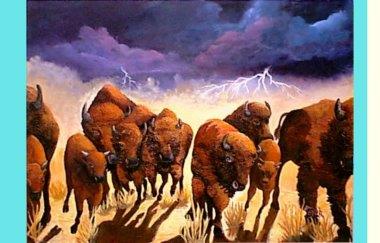
How Humpback’s Buffalo Broke Free to Run on the Plains
by Francie M. Berg | Dec 15, 2020 | Stories
In the first days a mean and powerful being named Humpback owned all the buffalo.
He kept them locked in a corral in the mountains north of San Juan, where he lived with his young son.
The buffalo were crowded into the corral, without much to eat, and most of their food was covered with dust. They longed for the green grass and sagebrush they saw on the mountainside.
Not one buffalo would Humpback release for the people on earth to eat. And he refused to share any meat with hungry people or animals who lived near him.
Coyote and his family lived in a village not far from the mountains.
One summer game was very scarce. Coyote and other hunters traveled many miles in all four directions and found nothing to eat.
Everyone in the village grew thin with hunger. Coyote’s children cried because their bellies were empty.
Coyote decided something had to be done to help the buffalo escape from Humpback’s corral. He called the people to a Council.
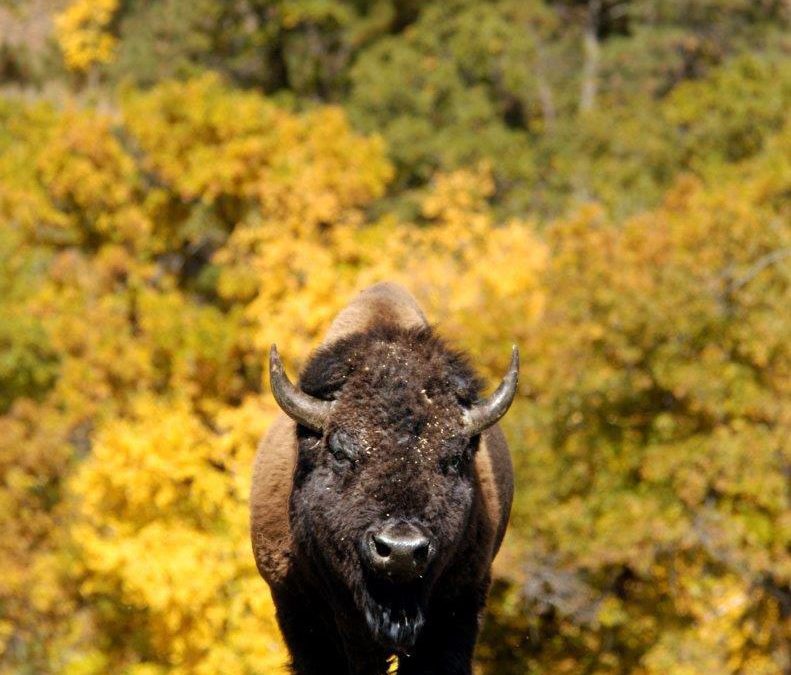
Race with the Buffalo
by Francie M. Berg | Dec 1, 2020 | Stories
Traditional storytellers believe that old stories are best told in the native language and to listeners who understand their culture.
They say an amusing story is “not as funny” in English. Much of the spirit, humor and excitement gets lost in translation.
Often the venerable grandmother with a twinkle in her eye entertained with hilarious tales about coyote tricksters and other mischief.
The following story may have been told just for fun with its twists, turns and surprises, for a giggling circle of attentive children
Many years ago all the animals lived in peace. No one ate anyone else. All the animals were the same color, because they had not yet painted their faces.
Buffalo was the largest of the animals and he was getting hungry.
He wanted to be the chief of all the animals. He wanted to draw strength from all the other animals by eating their flesh. Buffalo wanted to become the grandest of all the animals.
He said he deserved this as the largest and strongest of all.
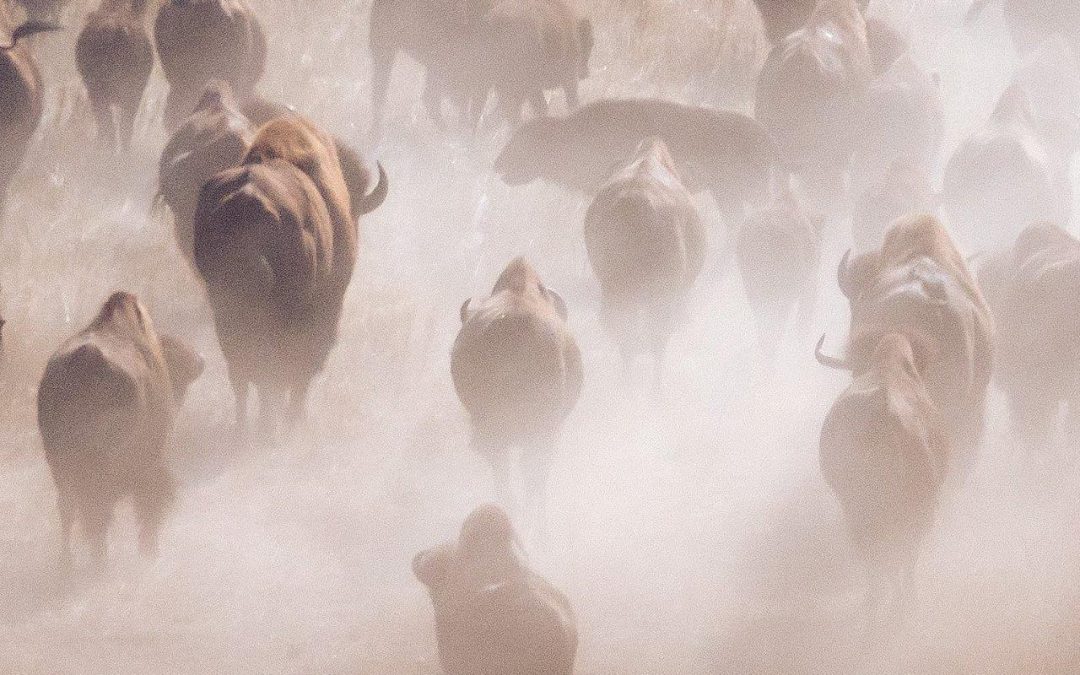
Kiowa Farewell to the Buffalo
by Francie M. Berg | Nov 17, 2020 | Stories
The buffalo provided everything the Kiowas ever needed.
Their tipis were made of buffalo hides, stitched together with sinew. So were their clothes and tough moccasins.
They ate dried buffalo meat and pemmican all through the year. Containers in which they kept food and provisions were made of hide, bladders and stomachs.
Even more important, the buffalo sustained the Kiowa culture, their spirituality and religion.
When possible, a white buffalo calf must be sacrificed in the sun dance.
The priests and medicine men used parts of the buffalo to make their prayers when they healed people or when they sang to the powers above.
Buffalo were the lifeblood of the Kiowas.
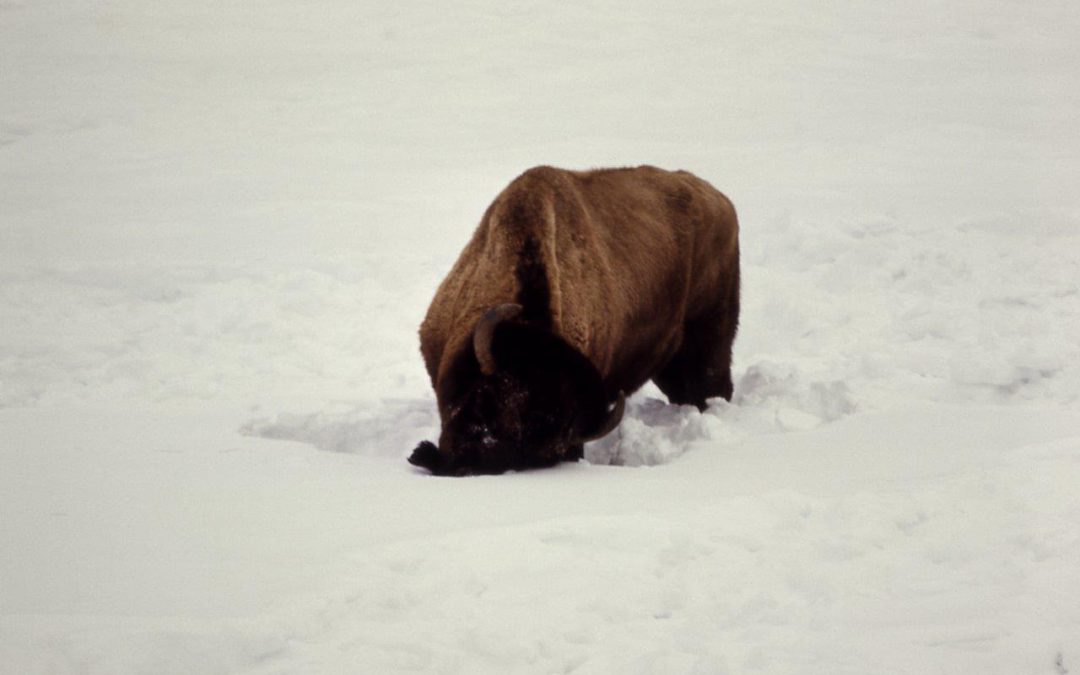
Buffalo Survival in Winter
by Francie M. Berg | Nov 3, 2020 | Stories
Buffalo are known for their great natural vigor, surviving the worst blizzards of the north.
A freak blizzard in October 2013 killed tens of thousands of cattle in western South Dakota, as well as sheep and horses, when four feet of heavy wet snow with powerful winds drove them over banks, into creeks and waterholes and piled up against fences in deep snowdrifts.
Some ranchers lost fifty to seventy-five percent of their livestock and faced financial ruin.
Following that deadly storm, the National Bison Association checked with local buffalo breeders; none reported buffalo loss.
In another deadly storm the winter of 1997-1998, with heavy financial losses to livestock, the toll was apparently only one buffalo death. He was run off an icy bridge by an eighteen-wheeler.
Those who raise buffalo testify to their hardy endurance in cold weather.
The animals have dense hair growth, so dense—coarse guard hairs with soft wool underneath—that every square inch has ten times as many hairs growing as does an inch of cow hide, reports Dale F. Lott, University of California Wildlife, Fish and Conservation biologist.

Hornaday’s taxidermy project of six buffalo
by Francie M. Berg | Oct 18, 2020 | Stories
Returning to Washington, after their great success in buffalo hunting, William Hornaday and his assistants set to work.
Hornaday’s vision developed before he even left Montana. This would be a grouping of bulls, cows and calves. He took time to collect some native soil, a few plants and sagebrush.
He selected six prime specimens—his masterpiece stub-horn bull, cows, calves, a young bull.
After a full year they unveiled their masterpiece. There, in a huge glass case, visitors to the Smithsonian Museum viewed an enchanting scene–six buffalo in an authentic Montana setting.
The Washington Star described the exhibit on March 10, 1888:

Hornaday’s Buffalo Hunt for the Smithsonian
by Francie M. Berg | Oct 6, 2020 | Stories
By 1883 the vast herds of buffalo had entirely vanished. Only a small pocket survived here and there in remote areas—and even these, as soon as any hunter learned of them, did not last long.
Clearly the buffalo would soon be extinct as a species.
Alarmed, William Hornaday, as the Chief Taxidermist at the Smithsonian Museum in Washington, DC—America’s greatest museum—took stock of his museum’s buffalo inventory.
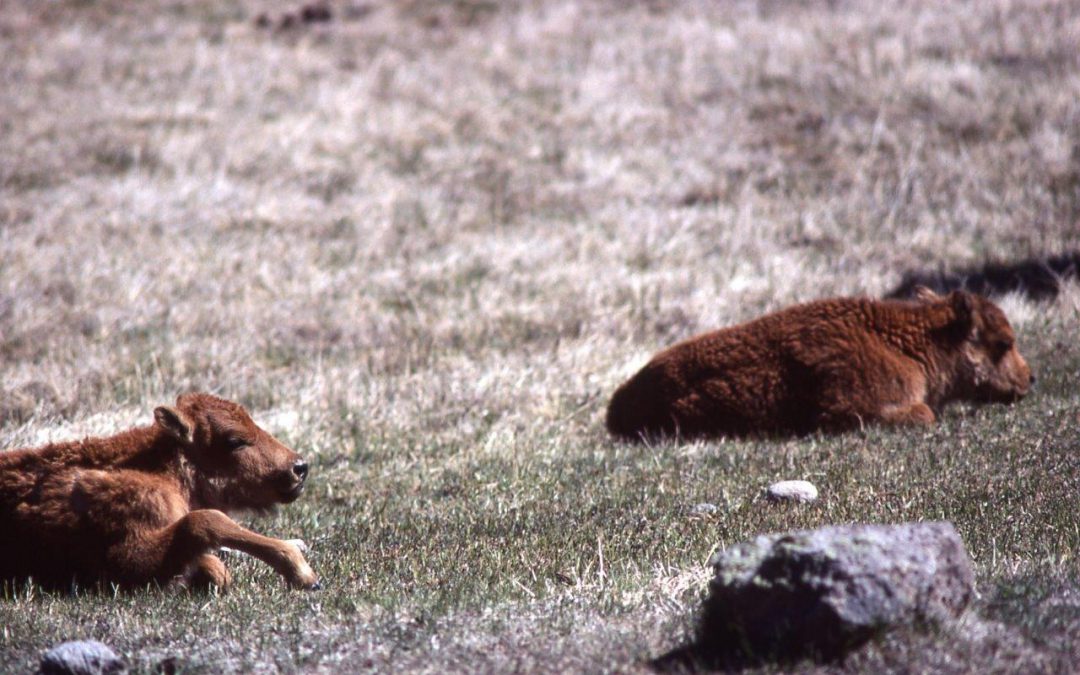
Sam Walking Coyote’s Buffalo calves
by Francie M. Berg | Sep 22, 2020 | Stories
Samuel Walking Coyote of the Pend d’Oreille tribe had no intention of raising buffalo—he just wanted to hunt them. But there were no buffalo west of the Continental Divide where he lived with his Flathead wife on her reservation in western Montana. Yet Walking Coyote...

Wild European bison will roam free in England
by Francie M. Berg | Sep 8, 2020 | Stories
Wild bison will return to the United Kingdom for the first time in thousands of years, with the release of a small herd near Canterbury in East Kent planned for spring 2022, according to the Guardian, July 10, 2020.
The Steppe Bison went extinct about 10,000 years ago. Now the UK is bringing back their nearest relative—the European Bison or Wisent (Bison bonasus), also known as the zubr—in the hope of restoring the area’s ancient woodlands.
The $1.4 million Wilder Blean project, to reintroduce the animals, will help secure the future of an endangered species. They will also naturally regenerate a former pine wood plantation by killing off trees. This is expected to create a healthy mix of woodland, scrub and glades, boost insect, bird and plant life.
Populations of the UK’s most important wildlife have dropped an average of 69% since 1970. Britain is one of the most nature-depleted countries in the world, despite the best efforts of conservationists.

Photographer nearly trampled to death
by Francie M. Berg | Aug 25, 2020 | Stories
One of the men attracted to Michel Pablo’s grand roundup of his near-wild buffalo was Norman A. Forsyth, a young photographer who began selling stereo cards and viewers door-to-door while attending college at Wesleyan University in Lincoln, Nebraska.
After college he moved west, still selling for Underwood and Underwood, an early producer and distributor of stereographic views. Attracted by the scenic beauty of Yellowstone Park, Forsyth worked as a tour guide and stage driver in Yellowstone five summers, taking scenic stereographic views along the way, and then set up a photography studio in Butte where he sold them.
Fascinated by what he read of Michel Pablo’s great roundup of near-wild bison he took his cameras to Ronan, MT. There he made friends with Charlie Russell, a cowboy painter also attracted to the dramatic buffalo action they saw every day.
Forsyth shot stereographic views and Russell painted and sketched numerous scenes over the first three summers during which the Pablo buffalo roundup shipped most of the animals to Canada.
One day Forsyth scrambled down into some trees to get the perfect shot as the cowboy wranglers brought in a herd of buffalo across the river toward the corrals.
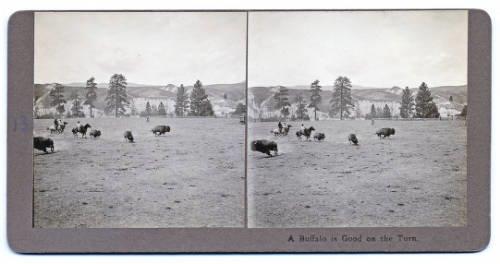
Bud Cotton and his Buffalo Roundup Gang
by Francie M. Berg | Aug 11, 2020 | Stories
E.J. (‘Bud’) Cotton was the Buffalo Park Warden at Wainwright, Alberta from 1912 through 1940. An old-fashioned buffalo handler who rode hard and worked his crew hard, he preferred to change their lathered-up horses at noon if at all possible.
Cotton hired a hard-riding Buffalo Roundup Gang—as he called them for “fall” roundup, which they tackled in stride during the coldest days of winter.
Long before the advent of low-stress handling practices were being advocated for buffalo, the buffalo herds were literally wild animals, and they came stampeding between the drift fences toward the open gate at a dead run.
Cotton said his corral fences looked strong enough to hold an elephant “but just stick around until we run a bunch of buffalo into them, then watch the splinters fly!”
When worked, the thousands of buffalo they corralled and manhandled bore some scars—but so did the riders, he wrote. Even years later the men “still bear scars and sore bones as mementos of those same good old days.”
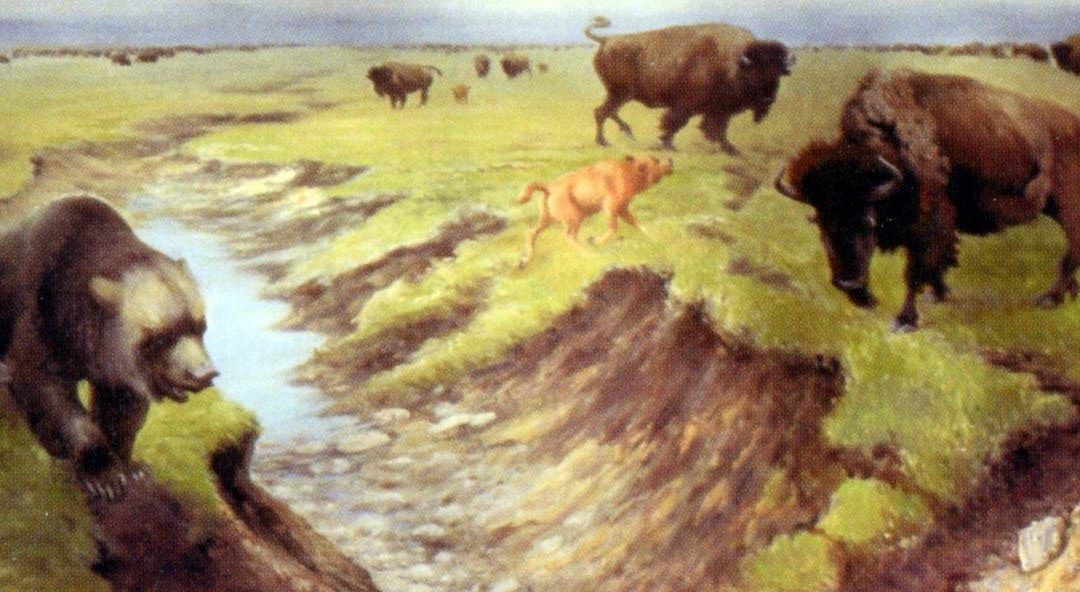
Buffalo Heifer attacked by Grizzly
by Francie M. Berg | Jul 28, 2020 | Stories
In another unusual rescue, a Blackfoot Indian reported seeing a buffalo bull charge a grizzly bear that had attacked a heifer.
The grizzly was lying in wait, hidden by a trail near a creek when a small bunch of buffalo trailed down to drink. Led by a young buffalo heifer, they came down the bank in single file.
As the heifer passed under the clay shelf where the grizzly hid, he reached down with both paws and caught her around the neck, then leaped on her back. She struggled to escape.
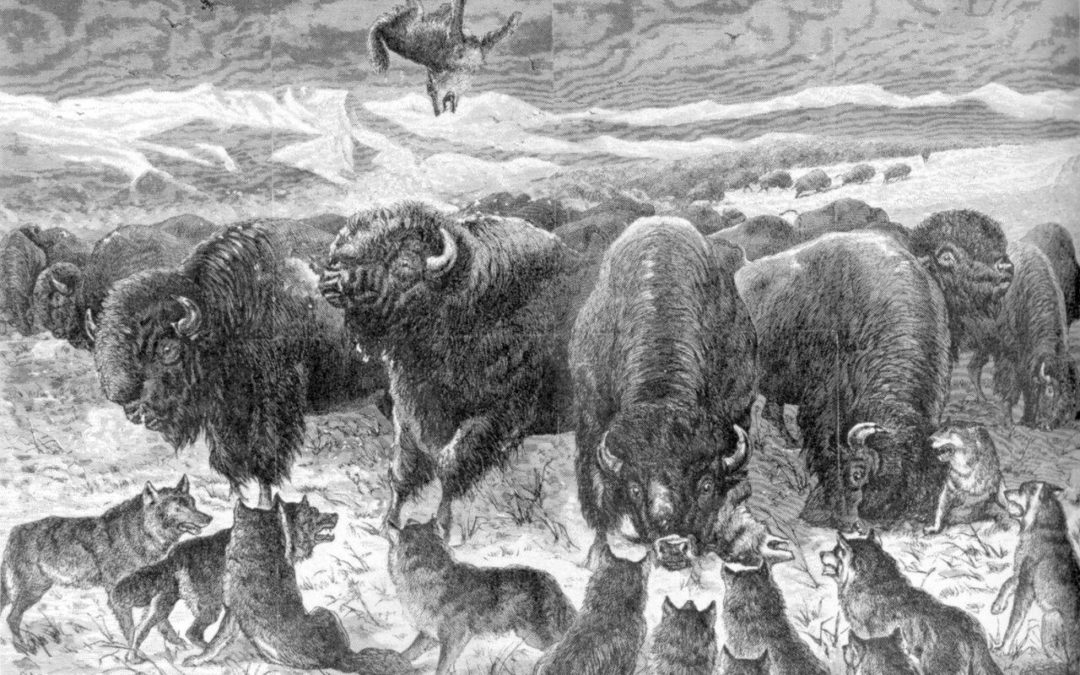
Noble Fathers we saw in Actiond
by Francie M. Berg | Jul 14, 2020 | Stories
Buffalo bulls are born with a strong sense of responsibility.
The “noble fathers,” as they’ve been called in earlier times, for protecting mothers and calves from the ravages of wolves. In blizzards and fierce storms, it was said, they form a triangle facing into the wind and shield cows and calves from wintery blasts.
I saw those “noble fathers” in action once myself.
We were riding horseback in the North Unit of Teddy Roosevelt Park with some friends.

Great Indian Buffalo Horses
by Francie M. Berg | Jun 30, 2020 | Stories
According to all accounts, the Indian horses were better trained for the job than those of white hunters, reported William Hornaday. He credited this to the fact that shooting with bow and arrows required free use of both hands.
This was only possible when the horse took the right course of its own free will and as guided by knee pressure alone, held close to the buffalo during a charge.
“Indeed,” he wrote, “in running buffalo with only the bow and arrow, nothing but the willing cooperation of the horse could have possibly made this mode of hunting successful.

Enormous Buffalo Herds of the 1800s
by Francie M. Berg | Jun 23, 2020 | Stories
During the fall rut—or breeding season—huge wild herds of buffalo came together on the plains.
Descriptions often had it that the hills were “black with buffalo as far as the eye could see.”
Explorers and travelers often tried to describe and estimate how many buffalo they could see from a single vantage point.
On viewing a large herd of cattle one day, a Canadian named John McDougall was amazed to learn there were 23,000 head in the herd before him. He said that cattle herd in one small valley was far smaller than the immense buffalo herds he’d seen spread out over a dozen hills and flats in the plains.
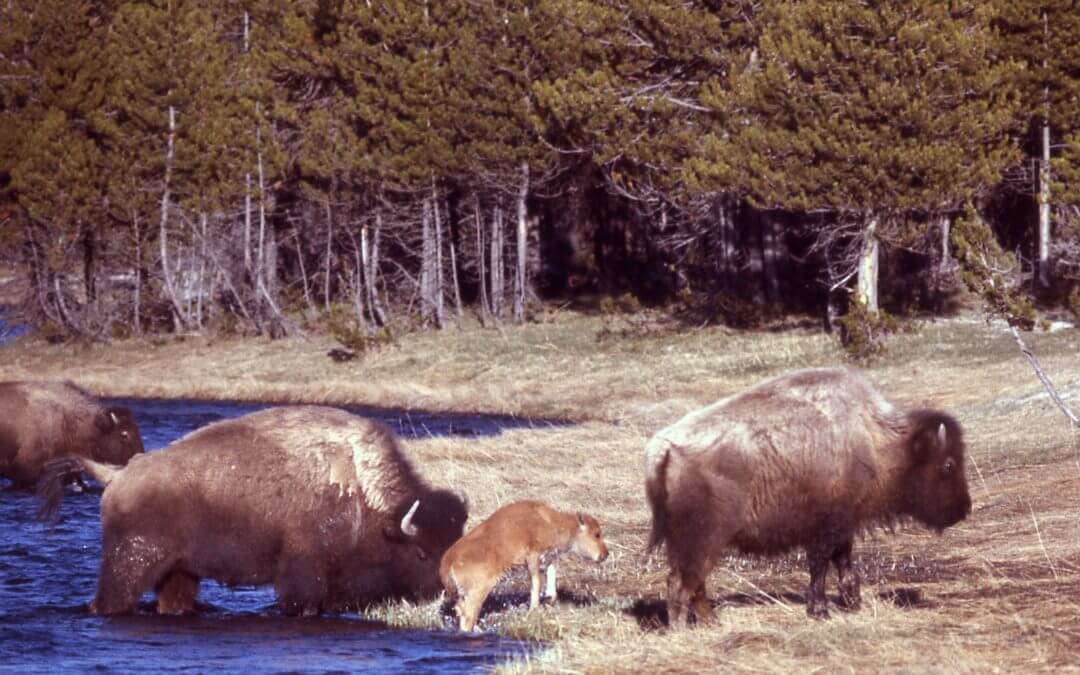
Buffalo Mothers help Care for Newborn
by Francie M. Berg | Jun 9, 2020 | Stories
Buffalo take care of each other, says Mike Faith, who was Standing Rock’s Buffalo Manager for some 20 years. He’s now Tribal Chairman.
Faith says buffalo watch each other for warning signs of danger or stress.
When it comes time for a cow to give birth she finds a secluded place such as a ravine with trees. There she has time for herself, to be alone when the calf is born.
When alone, she is able to bond with her newborn, nourish it, and defend that calf until its strong enough to join the herd.
Amazing Buffalo Hunting Feats
by Francie M. Berg | Jun 2, 2020 | Stories
Stories of amazing exploits by Native hunters were told and retold around evening campfires.
Living among the Northern Cheyenne for a time, George Grinnell recorded more than one time when a hunter shot one arrow entirely through the bodies of two buffalo.
And if an arrow did not sink deep enough, the hunter often jerked it out of the running buffalo and fired it again.
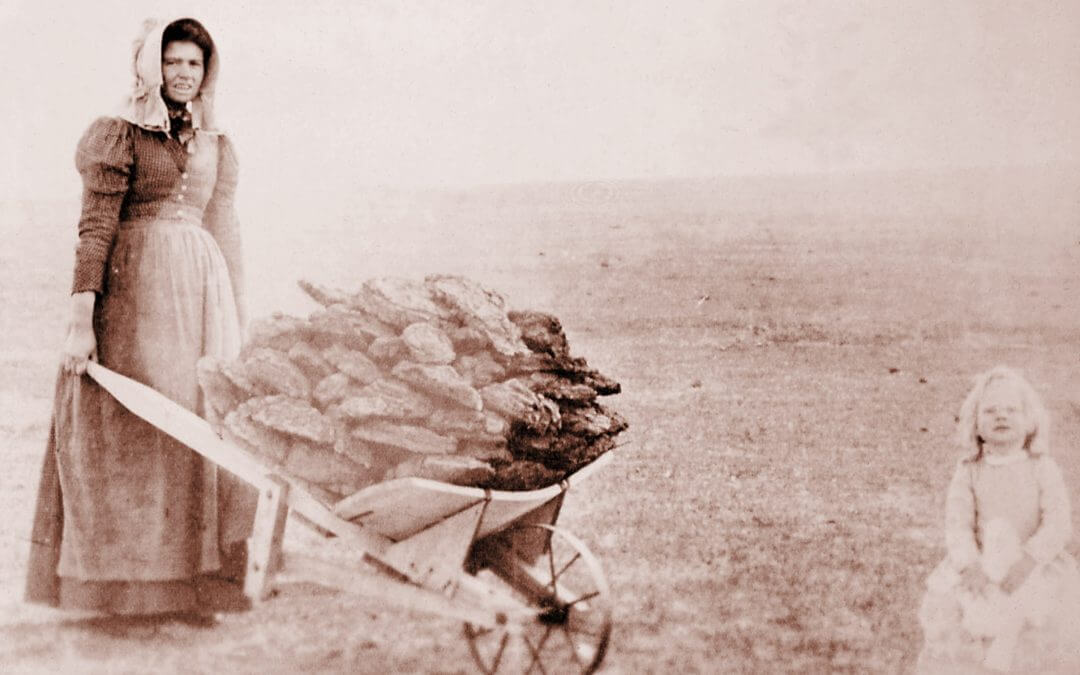
Buffalo Chips keep Fires Burning
by Francie M. Berg | May 26, 2020 | Stories
The last wild buffalo had disappeared, along with their meat and hides. Their whitened bones had been picked up, hauled to the nearest railroad and sold for fertilizer.
But after all that, there was still one last gift of the buffalo sprinkled across the western plains—dried buffalo chips.
Native Americans had always burned buffalo chips where trees were scarce. These large, chips or “buffalo pies,” when dried burned quickly to start a fire. They produced hot fires to warm the tepee or to roast a meal.
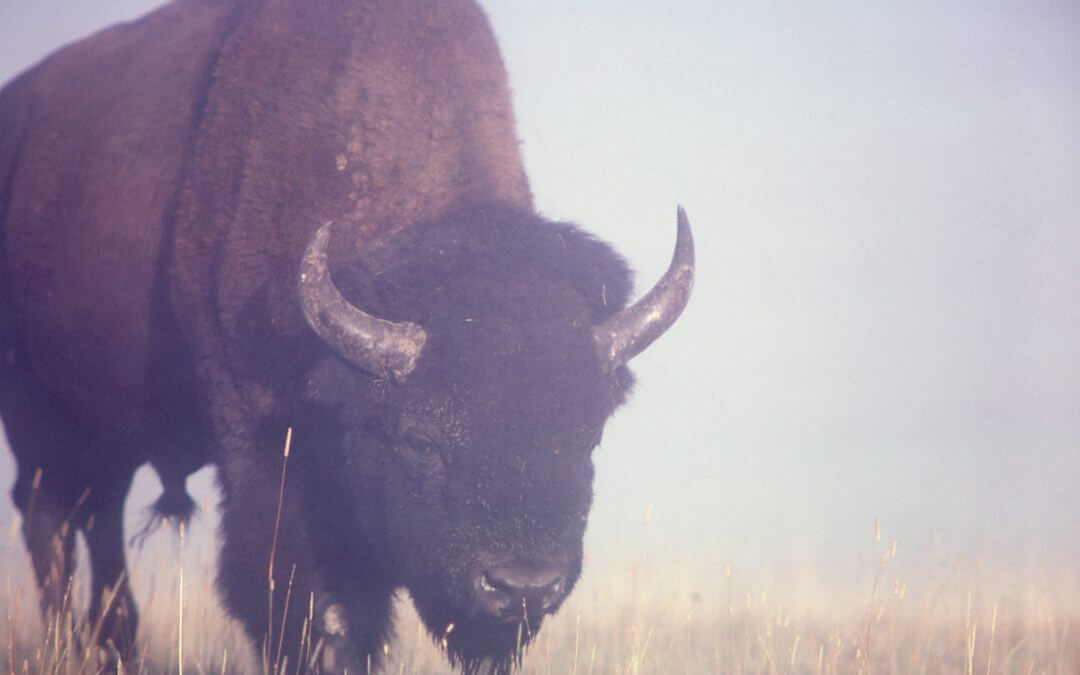
The Brave Hunter and his Buffalo Family
by Francie M. Berg | May 19, 2020 | Stories
Traditionally Native grandparents taught children that, “The buffalo are our brothers.”
In turn, children learned to respect the buffalo, and remember to thank them for their many gifts.
Stories were often told to strengthen the bond between buffalo and humans.
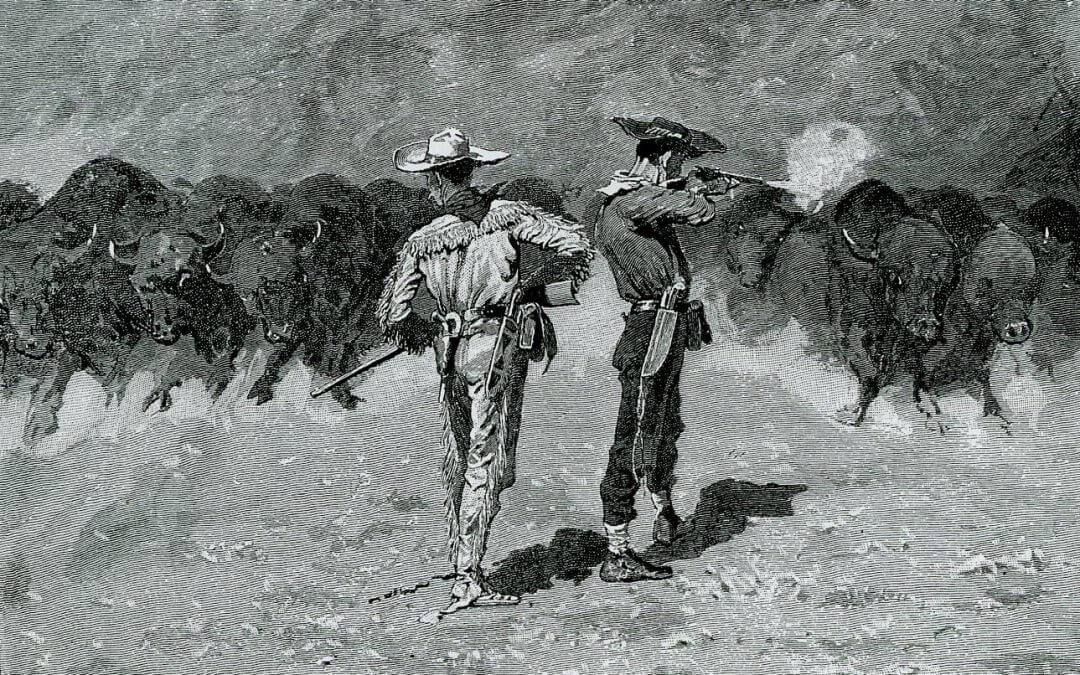
Buffalo Stampede
by Francie M. Berg | May 12, 2020 | Stories
Many buffalo stampedes were described by hunters, soldiers and early settlers on the plains and prairies. They regarded stampedes as spectacular and grand, but “awful in its results,” according to David A. Dary in The Buffalo Book.
It took little provocation at times to get a stampede started—the yipping of a prairie dog, the cry of a wolf or coyote, a flash of lightening, or a clap of thunder could set it off.
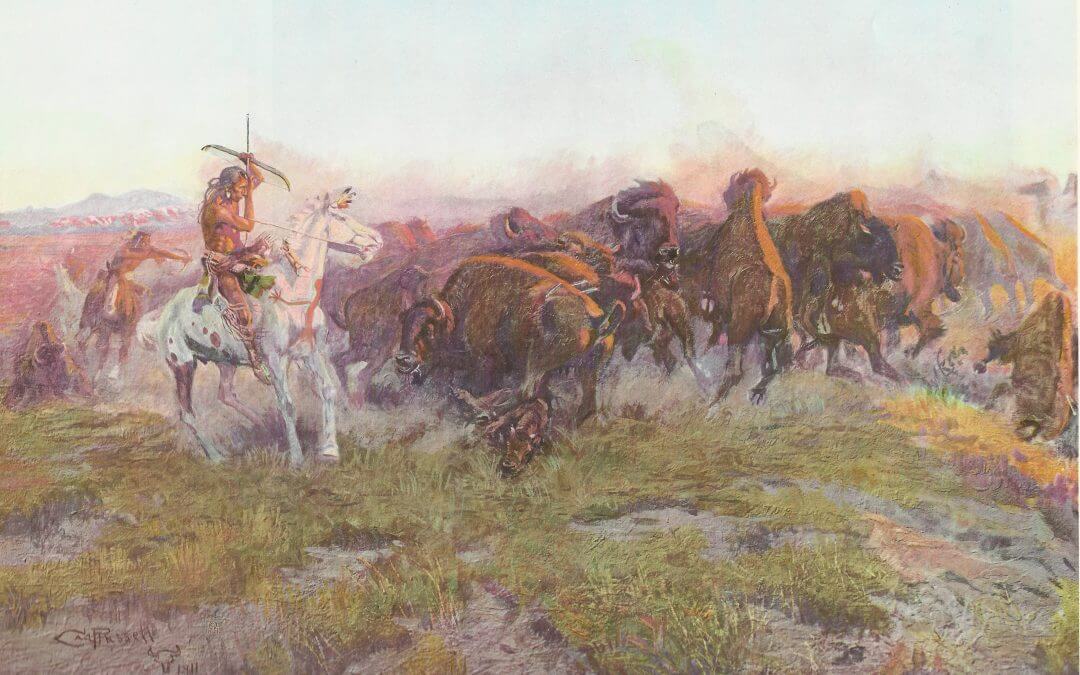
Buffalo Hunting Accident
by Francie M. Berg | May 5, 2020 | Stories
Bears Arm, a second chief of the Hidatsa, told how he got caught on foot in the middle of a stampeding buffalo herd.
It was during the glorious days of “running buffalo.” Those days arrived with horses on the northern plains, sometime after 1700 and ended with the last of the wild buffalo in 1883.
The first horses arrived in Puerto Rico, North America, with Columbus and the Conquistadors on his second voyage in 1493.
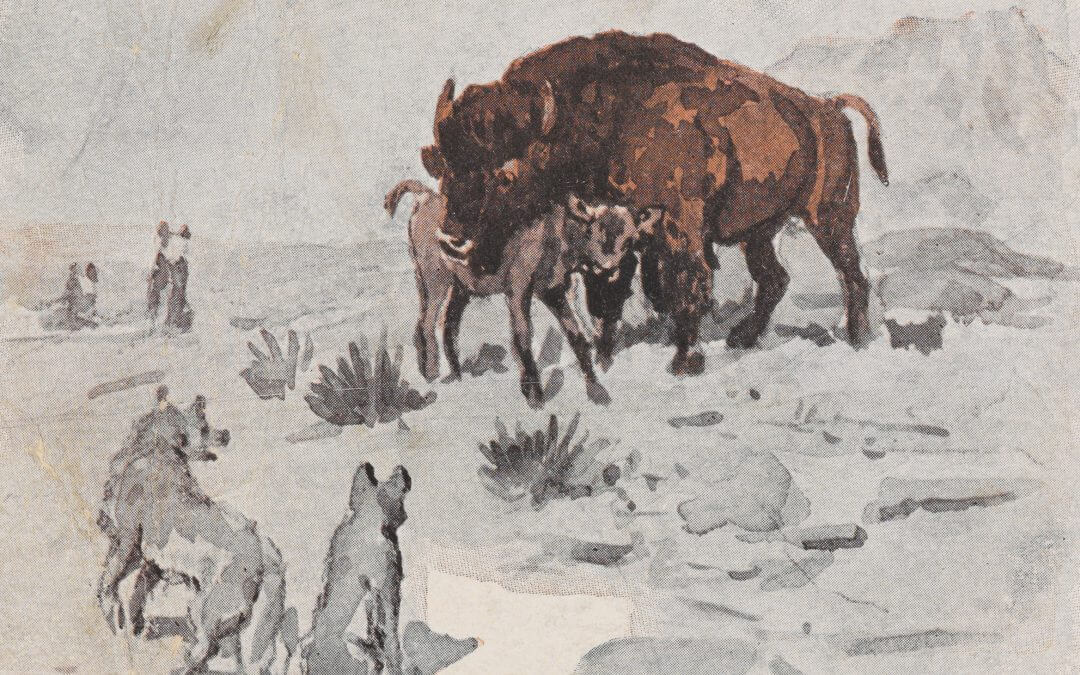
Noble Fathers
by Francie M. Berg | Apr 28, 2020 | Stories
I’ll leave you with a remarkable buffalo story—one of my favorites—told by a soldier on the Plains way back in buffalo hunting days.
One day an army surgeon was out buffalo hunting. As he headed back to camp he saw what he described as “the curious action of a little knot of 6 or 8 buffalo.”
Riding closer, he saw they were all bulls, standing in a tight circle with their massive heads facing out, snorting and pawing dirt.
A dozen large gray wolves danced around them in impatient expectancy, licking their chops.

Author
Francie Berg

Assistant
Ronda Fink
Subscribe
Sign up today for your
FREE Subscription
to the
Buffalo Tales & Trails
blog.
Click Here